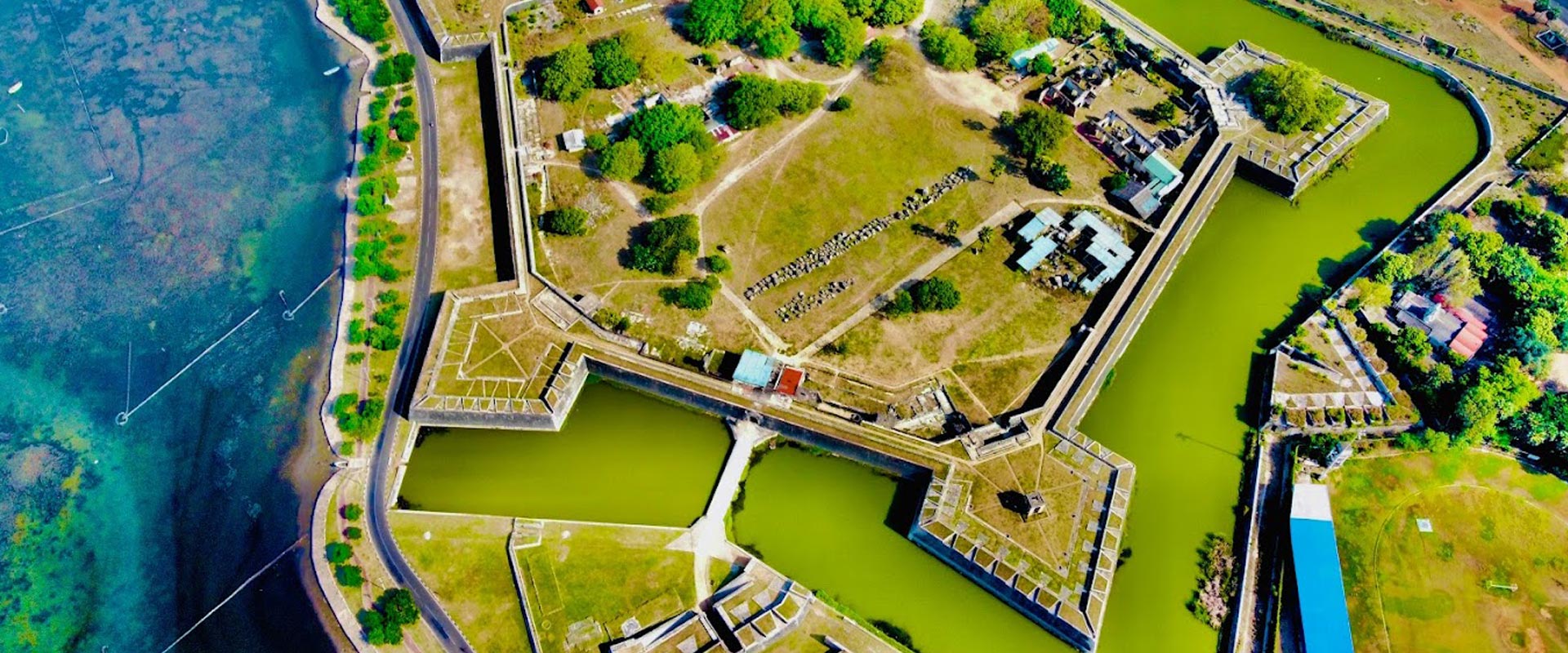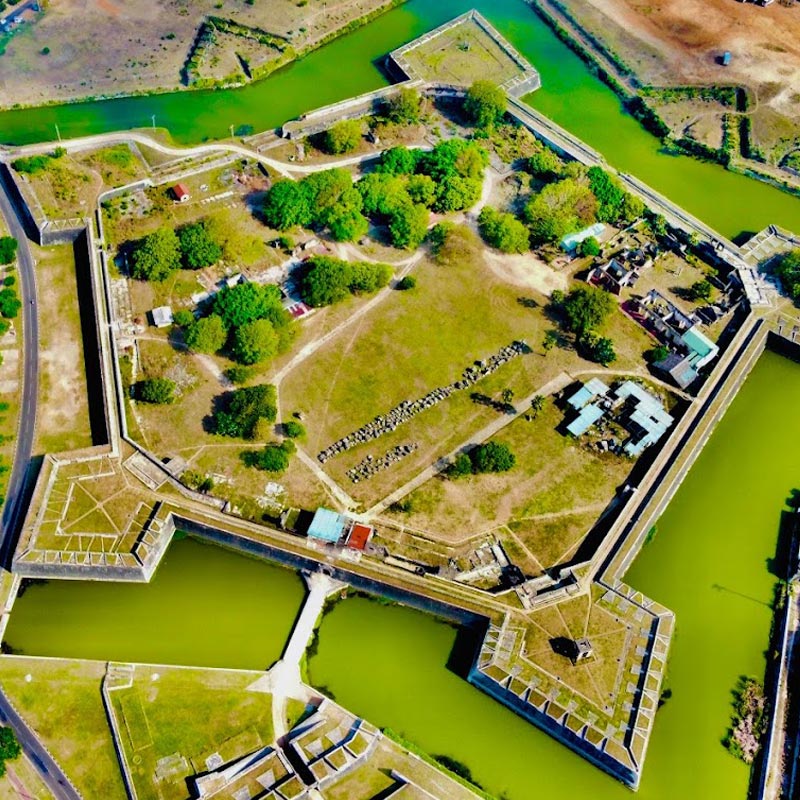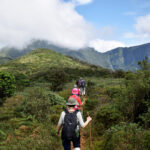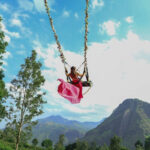Magnificent Jaffna
Jaffna, the Capital of Northern Sri Lanka is one of the most underrated cities of Sri Lanka. In contemporary Sri Lanka, Jaffna is considered the epitome of the Hindu-Tamil Culture, while archeological evidence confirms that in the ancient times, the Buddhist culture had spread to the north as well as across the entire island. In the 13th Century AD, Jaffna was established as the controlling center of the trade route between Sri Lanka and India.
Examples of the Historic city of Jaffna is found through the existence of the Dutch fort and a host of other archeological monuments which are seen to the present day as ruins
Nallur Kandaswamy Kovil
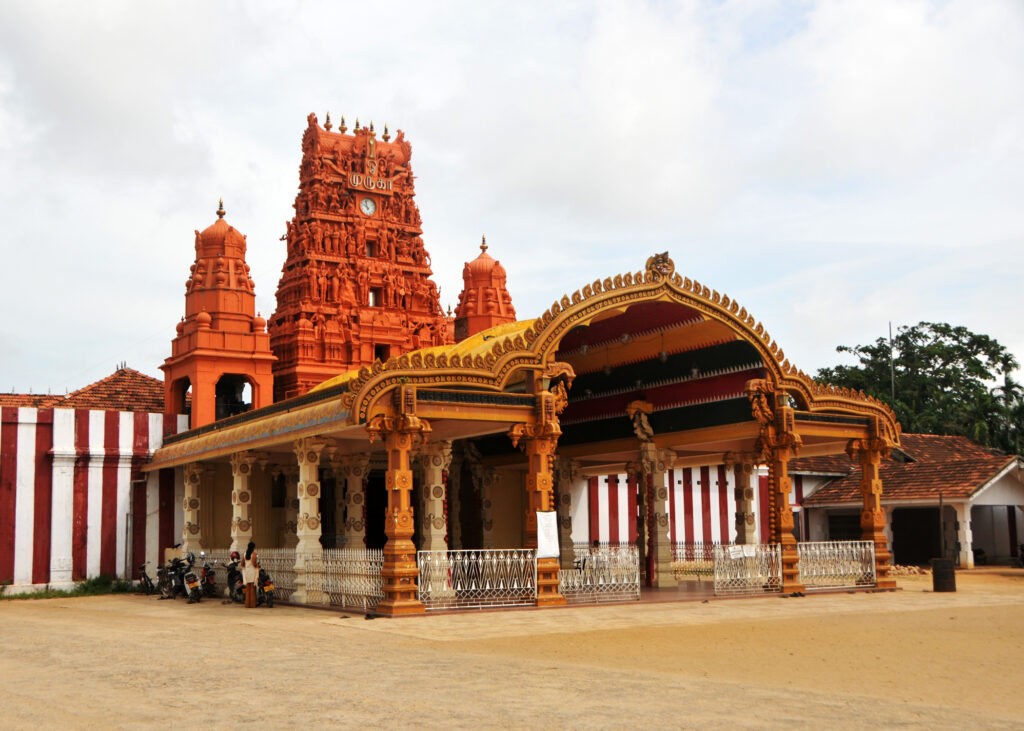
The majestic Hindu temple for Skanda / Murugan – the God of love, war and beauty is situated in Nallur, about 3km from the city of Jaffna. Adorned with Golden arches and an ornate gopuram power, this Kovil has reigned over the land for centuries, attracting devotees from various walks of life. The temple itself embodies a kind of peace that can only be felt in the most divine of places.
Though originally founded in 948 AD, the Kovil was rebuilt three times before being destroyed by the Portugese who build many churches over the ruins. The last remains were destroyed during the recent civil war and now all that remains is the platform where it was mounted. The temple was later rebuilt in the current location in 1734 and its Golden Era began in the latter part of the 1890s during which time it was renovated and brought back to its earlier magnificence.
Every year, the Nallur Kovil hosts a festival (usually during the full moon in August), which starts off with a flag-hoisting ceremony and carries on for 25 days. During these days, devotees can be spotted having their bodies pierced with hooks, exhibiting no pain in response, an act of faith that is a fundamental part of their religious beliefs.
Prior to entering the Kovil, all visitors are required to cleanse themselves and be dressed in appropriate attire. For men, this includes either pants or sarongs that cover their legs, whereas the upper body should be bare. Women are to wear something long that covers their legs, and the same for their upper bodies, with tank tops and the likes being prohibited. No footwear is allowed within the temple’s premises.
Jaffna Public Library
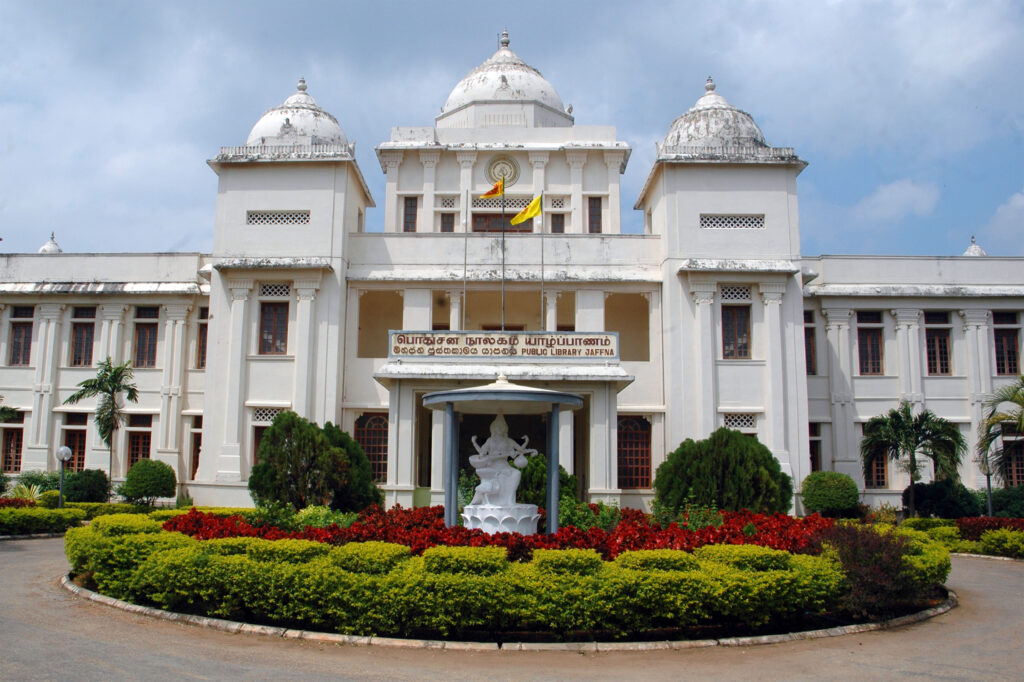
By Anton Croos – Own work, CC BY-SA 3.0
Jaffna Public Library is one of the city’s most notable landmarks and is run by the Jaffna Municipal Council. Built in 1933, the library was once one of the largest in Asia, having contained over 97,000 books and manuscripts back in the early 80s.
The library was burned down in 1981, during the civil conflict that was on at the time, and much of the precious constituents of the library were lost to the fire. In 2001, the library was renovated extensively, with a new complex being built and thousands of new books being brought in including books that support research on Sri Lanka, its folklore, culture, food, and more. Unfortunately, the old books and manuscripts were not replaced. It is Sri Lanka’s second main public Library only rivaled by the Library in Colombo.
The Jaffna library is still an architecturally significant structure, surrounded by gardens, with its grand symmetrical facade echoing memories of days gone by. It is open every day from 9am till 7pm while visiting hours are only limited to weekdays from 4:30 to 6:30pm. All visitors are required to remove their footwear prior to entering the building as a sign of respect.
Jaffna Dutch Fort
The Jaffna Fort is an intriguing piece of architecture built by the Portuguese before the Dutch took hold of the fort and went on to expand the fort, only to be swapped hands when the British invaded and drove out the Dutch. The fort remained a British garrison up until Sri Lanka gained independence in 1948.
This 400-year-old fort is a visceral reminder of Sri Lanka’s colonial past, as well as a maritime heritage. The massive fort complex overlooks the Jaffna lagoon, and while much of it remains intact, a certain part of the fort had to undergo extensive restoration efforts.
The Jaffna Fort is the second biggest Dutch Fort built in Sri Lanka and is an archeological monument that underwent severe destruction during the recent 30 years of armed conflict that ravaged the city. Only a few parts of the fort have been preserved and spared of destruction over the years including some tunnels, the Queen’s palace and the Dutch style short parapet wall while the Dutch church that was located within the fort has been bombed and completely destroyed along with the old prison, hospital and ancillary buildings.
Monuments within the fort have been destroyed during the conflict era and only the Queen’s Palace can be identified as it is in sufficient level of preservation than the rest of the monuments. Though the superstructure is completely destroyed, the remaining walls are currently decaying due to invasive plants rooting in them.
Dambakola Patuna Viharaya
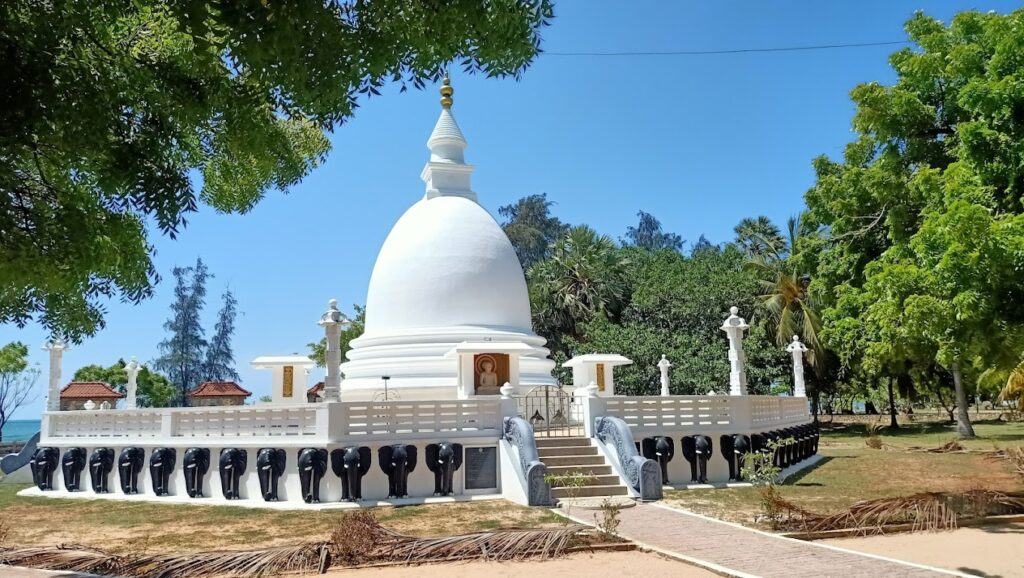
Photo by Bavithraa Puvanendrarajah
Previously known as the Samudrasanna Viharaya, the dambakol patuna viharaya is a temple that was built in the third century BC in reminiscence of a great arrival: the Bo sapling from the Sri Maha Bodhi of India by King Devanampriya Tissa, which was planted on the same place where the original tree was kept before being conveyed to Royal Gardens, the Mahamewuna of Anuradhapura.
The arrival of the Bo sapling, Arhant Sangamitta and artisans of eighteen varieties to attend every need of the Bodhi Tree saw a cultural upheaval in Sri Lanka resulting in greater advancements in agriculture, irrigation, arts, literature, sculptor, architecture and town planning, engineering, medicine and many other.
The few remains of the old temple and the old Bo tree has ceased to exist and the temple found on the location now is new structure built by the Sri Lankan Navy. Yet the newly built stupa stands tall amidst the Palmyra groves and the young Bo tree as a memory of a of a Port, which welcomed the golden era to Lanka and of a Bikkhuni turned Princess, who brought one of the greatest gifts from India to Sri Lanka.
Delft island
This island is named as Delft after the Dutch city is roughly oval-shaped. Access to the island is by a 1 hour journey on a ferry from Kurikattuwan to the southern tip of Pungudutivu (about 45 minutes by car from Jaffna). There are two ferry services per day: one in the morning and other one in the afternoon but the schedule is subject to significant changes due to weather and boat conditions. On arriving at the island there is only one bus available to go on the single road. It is probably advisable to hire a tractor or jeep that can take you on a more detailed route.
The most pleasant season to visit Delft is probably from July to August, when the bad weather has decreased but you are greeted with a slight breeze. January and February are cooler as in the rest of the island, but January can be wet.
In the western coast of the island there are remains of a 1000-year-old temple built by the Chola Dynasty, and ruins of a Dutch colonial fort. The water is slightly brackish and is taken from shallow wells using buckets made from Palmyra palm leaves. The houses are fenced by stacked coral stones or palm leaves, which gives Delft its particular appearance. There are feral ponies on the island, descendants of forebears abandoned there in the Dutch period.
Portuguese Fort, Baobab Tree, Banyan Tree, Quindah Tower, Wild Horses, Sarapiddy, Foot Print, Pigeon Nest, Old Stupa, Old Stables are the popular attractions in the Delft island.
Delft Biobab Tree
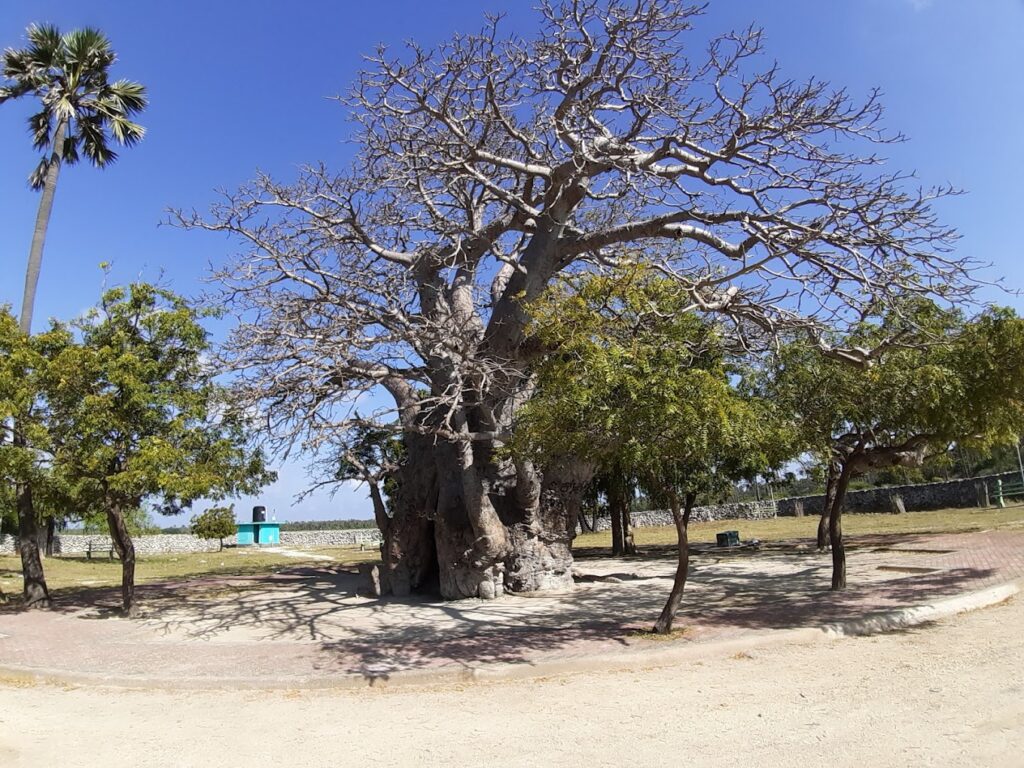
The Baobab (Adansonia) trees that are native to Madagascar, Australia and Africa, are another legacy of the Portuguese who brought them here for medicinal purposes for the horses. There are several Baobab trees in the island, each believed to be 300-400 years old. The one in Jaffna in particular is unique as the trunk has a hollow large enough to walk into while two people can stand abreast in the entrance.
Delft Dutch Fort
Once a Portuguese strong hold and a feared prison, the Delft Island Fort stands in ruins today. It was recorded to be a very complicated two storied edifice, full of long narrow corridors and little square rooms. In one corner of the fort had been the dungeon, a small square room, with a floor below ground level without any door, and having only one small window leading into the interior of the fort. The prisoners had been pushed in through this little opening or let down through a trapdoor in the floor above, and could have got out only by means of a rope many meeting their death in this little chamber
Yet gone are the strong fort and the fierce dungeon and the only remaining structure is the Dutch dovecots, used to house messenger pigeons, which still stands in perfect form.
Delft Growing Stone
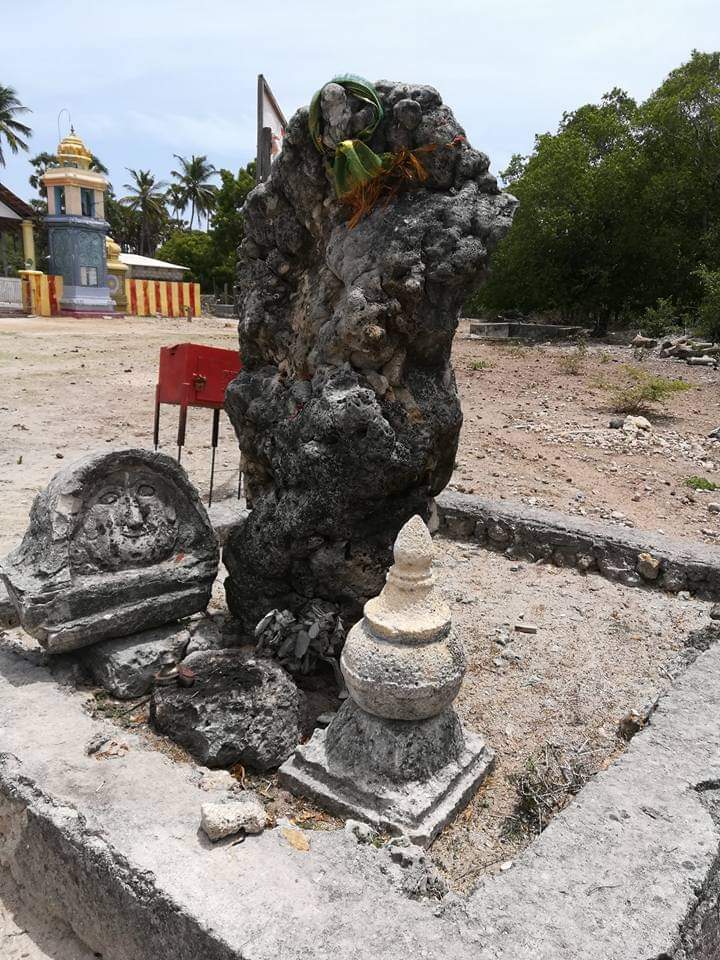
Photo by Thilina Athauda
A rock which had been adding inches through the years had gained the reverence of the inhabitants. The devotees of Kovil in the vicinity hold pooja by the rock due to its dim similarity to a hood of a cobra. Growing rocks seems to be the fashion in Delft, with another rock by the sea showing similar growth pattern. Shaped like a canoe, the phenomenon is held to be the calcite build-up from sea waves that wash over it.
Delft Temple
The base of a stupa is found in a corner of the Delft Island along with the remnants of four subordinate stupas surrounding it. Legend has it that this was the location where Arhat Sangamitta Theri rested during her voyage to the island carrying the sacred sapling of the Bo tree.
The stupa is said to have been built by the Buddhists who resided in the island at that time. Situated closed to the sea, the location also provides a panoramic view to the distant sea and beyond.
Delft Wild Horses
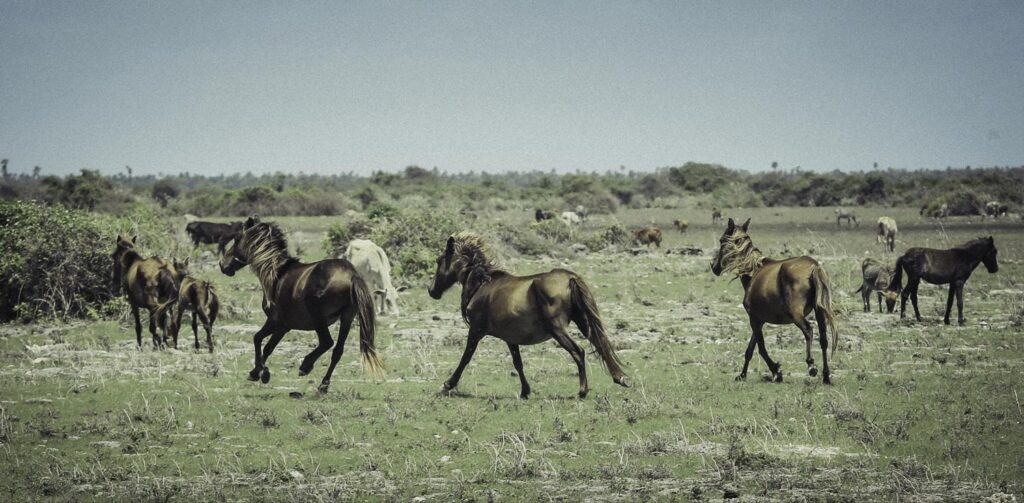
By Gajapera – Own work, CC BY-SA 4.0
One part of the island is used by villagers and the other part is used by horses and cattle. After bringing wild horses they had brought plants to feed them as well as medicinal plants. The Biobab tree is a plant which was brought to feed the horses. The population of wild horses is around 500-1500. Early in the morning these horses come to grassland and disperse when the heat is high.
Kadurugoda Temple
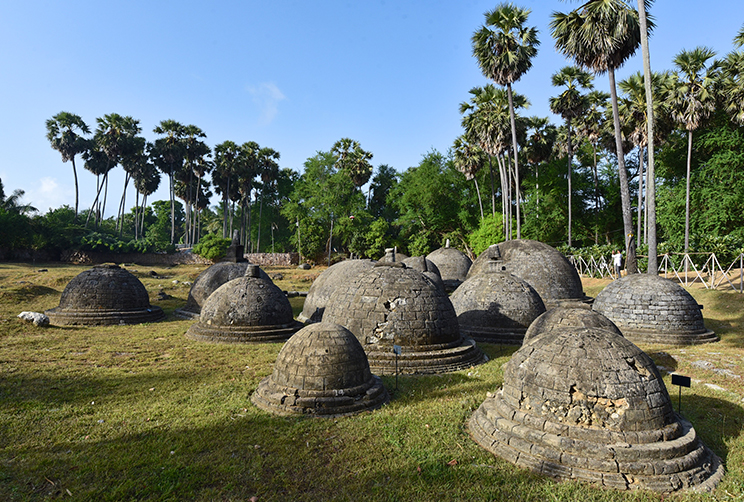
Photo by jetwinghotels.com
The Kadurugoda Temple is believed to be a part of an ancient large Buddhist Monastery that was graced by Lord Buddha on his visit to Sri Lanka.
The ruins of sixty stupa in this temple site, made of lime-based material, are believed to be containing the remaining of sixty arhants, who passed away of food poisoning. The earliest excavation had unearthed coins, beads, Buddha statues and coloured tiles of Anuradhapura and Polonnaruwa era. Based on the inscriptions the archeologists believe the monastery to have been under the control of Abhayagiri in Anuradhapura.
The temple was never revived and was discovered by archeologists yet continued to be under a spell of destruction and is still under the threats of encroachment
Nagadeepa Purana Raja Maha Viharaya
Graced by the presence of Lord Buddha on his second visit to Sri Lanka merely five years after attaining enlightment to make peace between two warring Naga Kings, Nagadeepa Purana Raja Maha Viharaya is among the sixteen most venerated Buddhist pilgrim locations in the island. The temple, situated in the island of Nagadeepa, 30km from Jaffna on road and another 15 minutes in a ferry, attracts thousands of pilgrims throughout the year despite its extreme location.
The Stupa which was first constructed nearly 2700 years ago was reconstructed and the temple rebuilt when the civil unrest stalled the flow of pilgrims again. The temple too received the brunt of the war and the temple’s main Buddha Statue a gift from Burma was dismantled and thrown to the sea. However, the end of the war had revived the pilgrimage to Nagadeepa and the temple and its surrounding is blooming under the sponsorship of visitors and the Sri Lankan Army.
Today there are two shrine rooms at the Viharaya premises. The main shrine room situated behind the Rajayathana Stupa is constructed in the traditional Jaffna architecture. The second shrine room is smaller and enshrines the Bronze Buddha statue gifted by the Burmese Government. On the opposite side of the temple and off the road is the ancient Bodhi Tree, one of the oldest in the island.
The Nagapooshani Amman Kovil
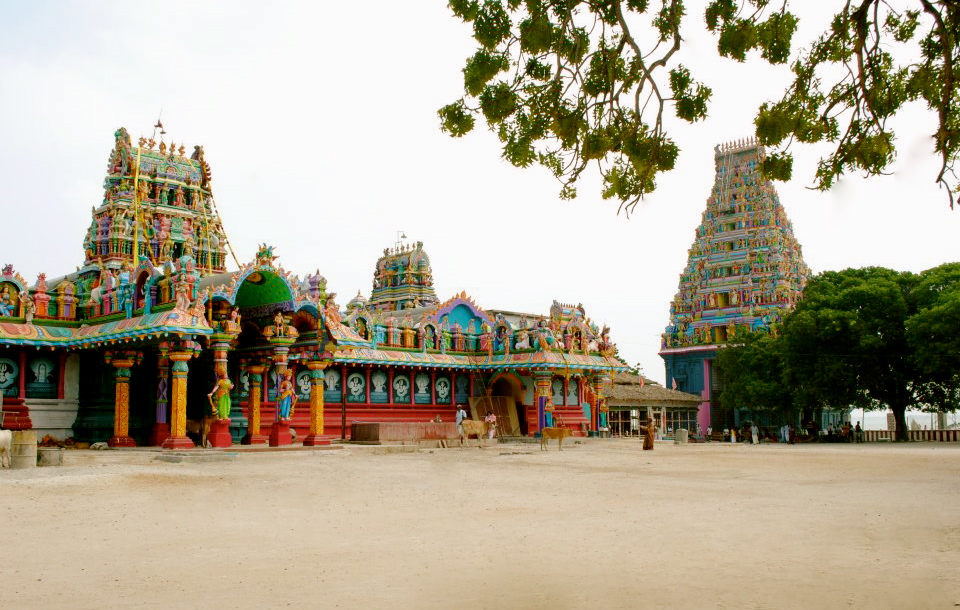
By Wikinamaste – Own work, CC BY-SA 3.0
Situated in the isle of Nagadeepa, just 30km form the Jaffna peninsula, Shree Nagapooshani (Bhuvaneswari) Amman Hindu Temple is wrapped in thousand years of myth and legend. According to legend, Goddess Sati, consort of Lord Shiva immolated herself in shame and pain that her husband was being abused by her father. Her body was shattered to 64 pieces and her anklet is believed to have fallen on to the place where the temple is. However, the original structure was destroyed by the Portuguese along with the Rajayathana stupa and the new temple was built during the 18th Century. The temple complex houses four gateway towers.
The most important festival associated with the temple is the 16-day long Mahostavam (Thiruvizha) that is celebrated annually in June/July and is attended by thousands of devotees streaming in from Sri Lanka and India.
Nilavara Bottomless Well
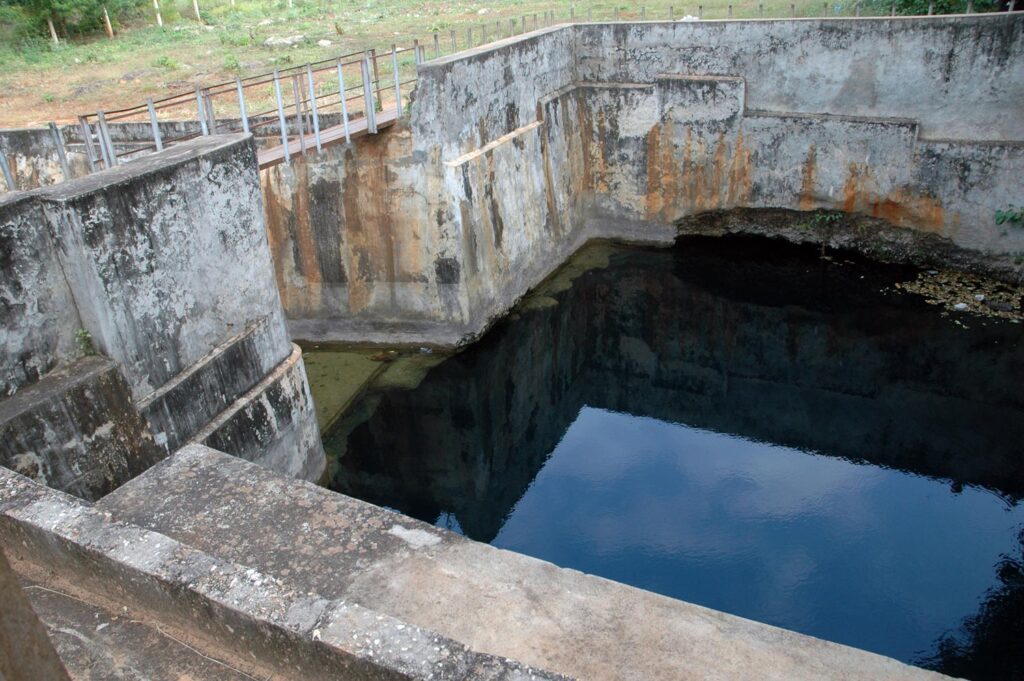
By Anton Croos – Own work, CC BY-SA 3.0
Nilavarai Well, a natural underground water well, considered to be bottomless has many legends adding to the mysteries that encircle it. According to legend, Seetha, wife of Rama, while on the return journey to India was overcome with thirst and as there was no water to be found, Rama had gallantly shot an arrow on to the earth creating a well.
On the more factual shade, the well provides fresh water to the area around and is a source of water for domestic and irrigational purposes. Two attempts by various scientific groups had failed to identify the bottom of this well or its water source while some believes it to be connected to the freshwater ponds through an underground river.
The surroundings of the well are scattered with the ruins of a Buddhist monastery yet to be excavated while some Buddha statues found from the vicinity could be found at the Jaffna Museum.
Archeological Museum Jaffna
Located in Nallur, the Jaffna Archeological Museum houses a rare collection of antiquities. Buddhist and Hindi religious collection being the biggest as it’s in various forms of metal, wood and stone. The excellent collections belong to the ancient Sri Lanka prior to the colonian era. Also some of the archeological excavations and findings of Kandarodai can be seen at this museum too.
Point Pedro
Situated at the North most corner of Sri Lanka, Point Pedro is believed to have named after the Dutch sailor who found it to be the north most corner of the country.
Just ten minutes away from point Pedro is the lighthouse, standing 31-meter tall. It looms into view from afar, white in striking contrast to the bright blue skies. Built in 1931 to guide passing boats and ships, its light is believed to have been powerful enough to extend 10 nautical miles into sea. However, it has only been used till the 1990s and today stands more of a monument than a navigation aid. Today is stands inside the point Pedro naval base unwelcoming visitors and accompanied by gulls and larks who soar high around its peak.
Elephant Pass
Located in the gateway and controlling access to the Jaffna Peninsula, Elephant Pass used to be the island’s largest Salt field. It has an important military base and was regularly the site of battles during the civil war. A strategic military base since 1760 when the Portugese built a fort, later rebuilt and garrisoned by the Dutch in 1776 and even later by the British. The last military base was built there by the Sri Lankan Army in 1952 and it expanded to cover a large area thus is home to some significant monuments that are found on the way to Jaffna.
Elephant Pass is essentially a land bridge with the sea all around it with a clear visual of the sunrise and sunset
Casuarina Beach
The White sanded Casuarina Beach is arguably the most popular one in the northern peninsula with its name derived from the numerous Casuarina trees that fringe its shore. Located about 20 km from Jaffna, Casuarina Beach is an ideal spot for a beach vacation for a number of reasons. The wide area it covers is picturesque, with endless gentle waves curling against the astonishingly pure white sand. The shallow waters mean it’s quite safe for families to take a dip, and the trees provide ample shade if the sun gets too hot to handle.
Towards the east, you could spy the Karainagar Lighthouse, located at the very tip of the beach. The bold lighthouse adds to the landscape’s gorgeous view, making it look like something out of a painting.
Jaffna Cuisine – Jaffna Crab Curry
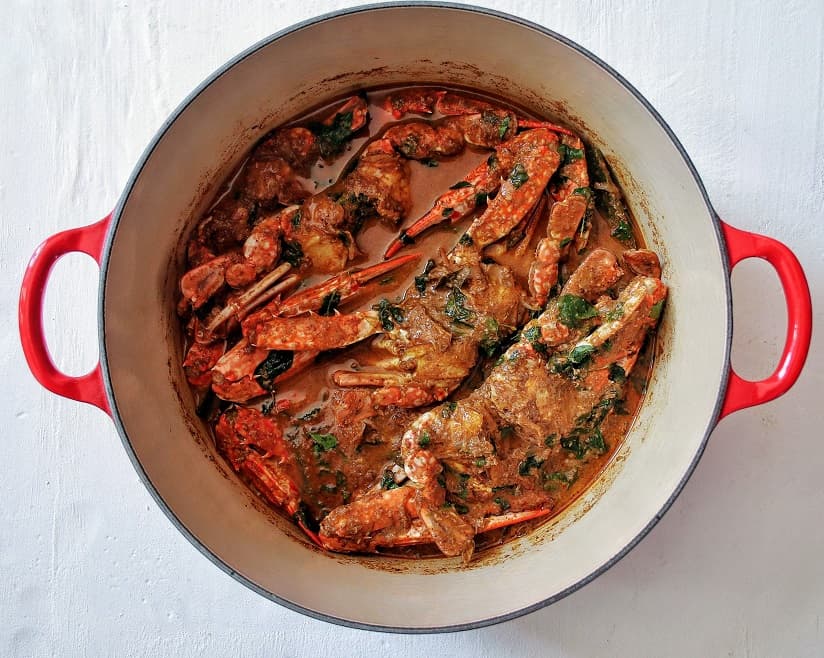
Photo by Abiy on questserendipity.com
The Greatest experiences while in Jaffna involves the savouring of its bold and fiery culinary delights. While curries are thinner in consistency in Jaffna, they’re much spicier when compared to the rest of the country. The robust flavours of Jaffna cuisine are guaranteed to leave a lasting impression on you. Mostly popular for their Seafood and meat dishes, Chicken and mutton are the primary meat products found in Jaffna. The cuisine of this region has something for all as they’re based on six types of tastes (i.e. sweet, sour, salty, bitter, astringent and pungent) and blended to create dishes unique to the region.
One of the most iconic seafood delicacies of Jaffna is its nandu kuzhambu, best known as the Jaffna Crab curry. Made of mud crabs harvested from mangroves and blue swimmer crabs from shallow coastal waters as they’re both known for their sweet flesh. Aromatic curry features spices like fennel, cumin, fenugreek, coriander, curry leaves, fresh green chilies, and dried red chilies, tamarind Juice and coconut milk.
Other popular dishes of Jaffna include koozh, a hearty seafood stew, Garlic curry, spiced potato, pepper soup which are generally served with a hearty portion of rice complemented with papadam and fried red chilies on the side.




